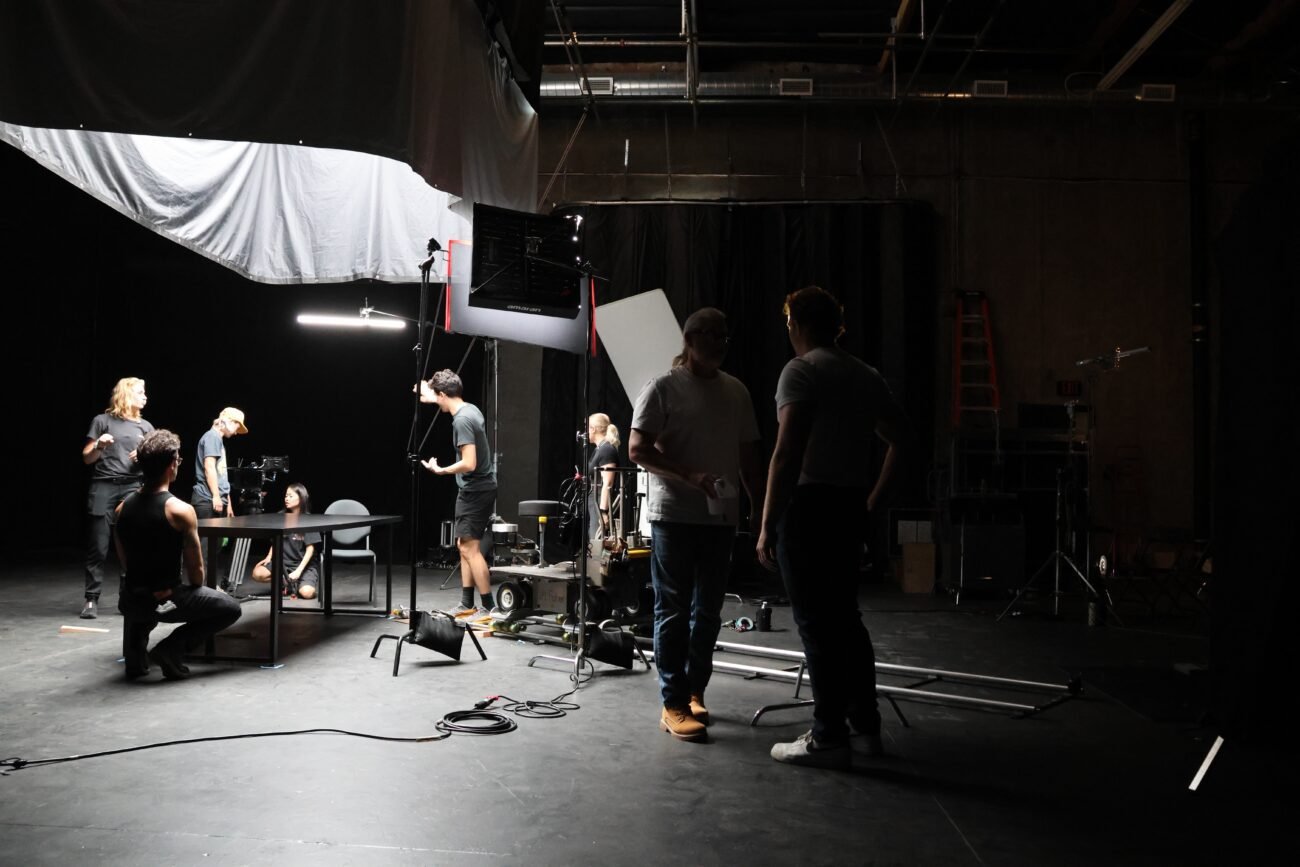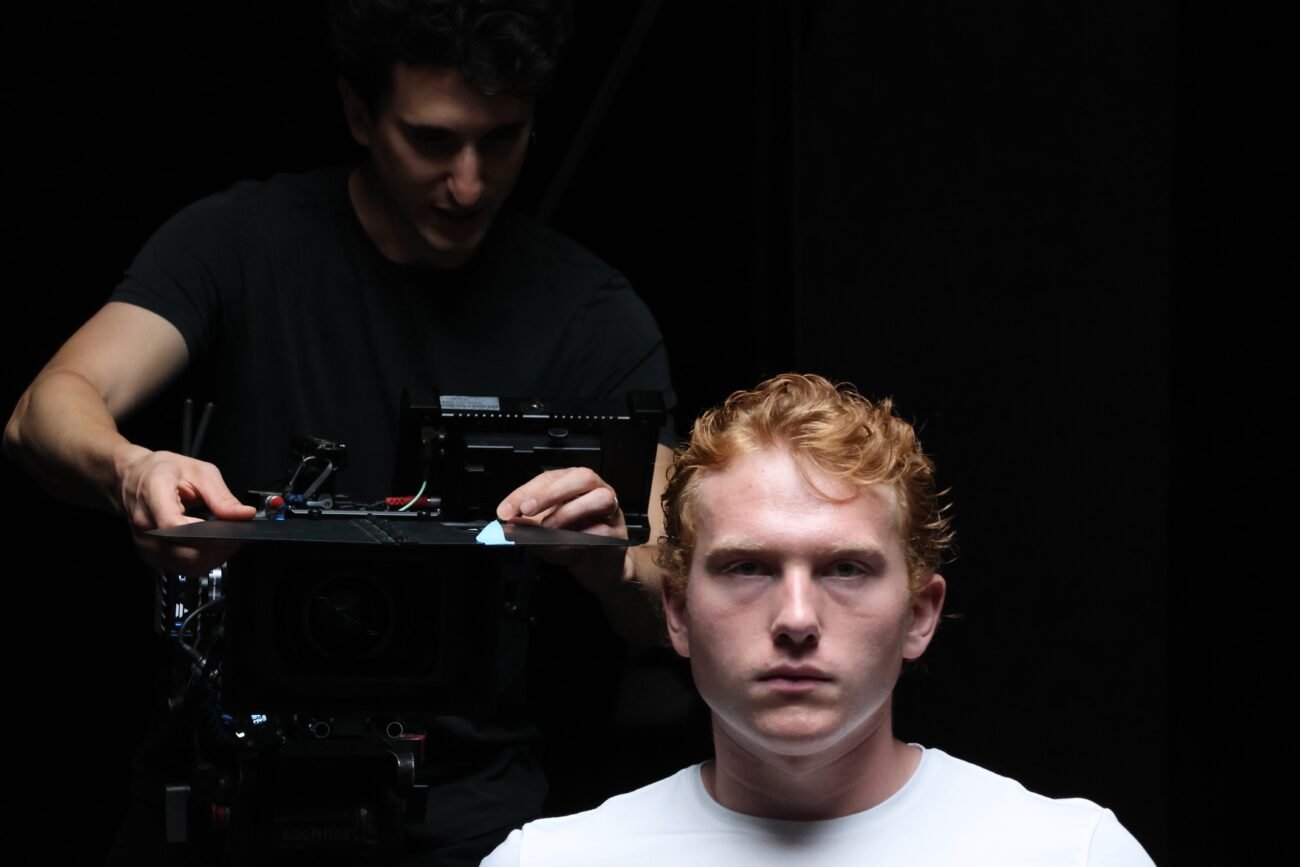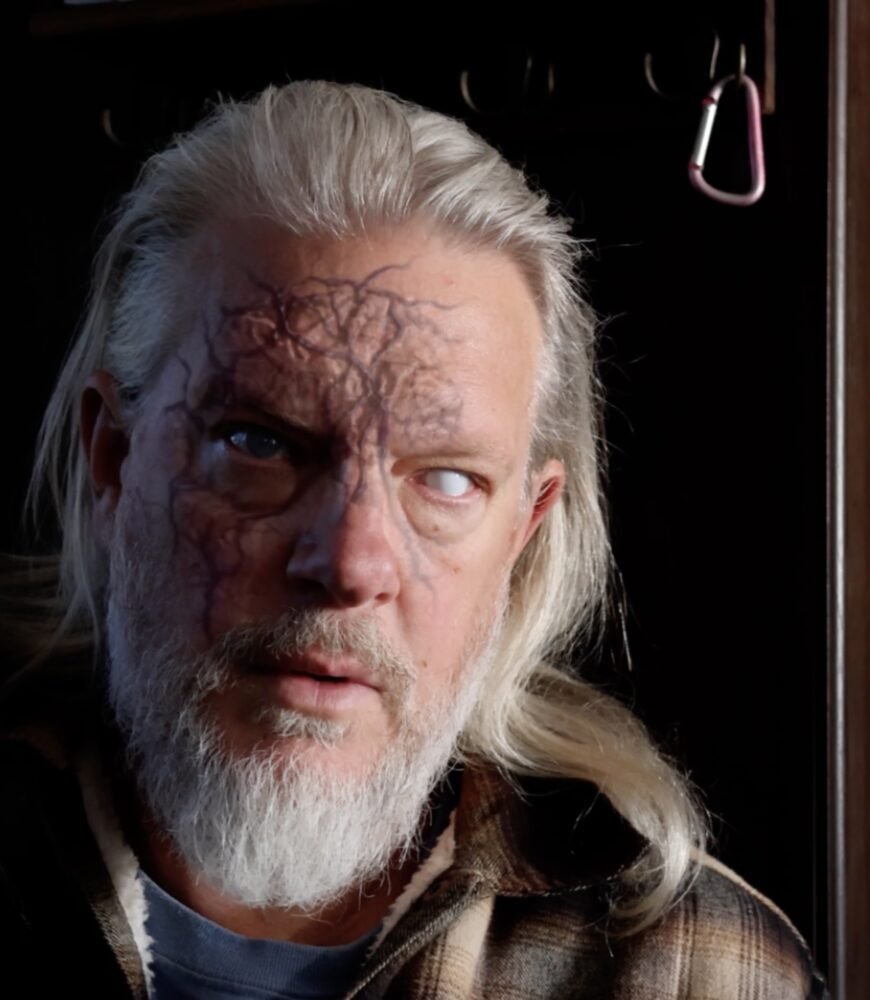I’ve admired found footage films for some time, always keen to discover different approaches to it, so pleased to see a film Grimmfest describes as “a twisty, disorientating and brilliant spin on the ‘found footage’ subgenre” in their 2025 programme. Once I watched Tribe, I was even more pleased to sit down and talk with the man behind it, Dan Asma; I relished the original slant, and the film’s tension, and I’ll almost certainly watch it again. (Perhaps that is enough to interest you, too: if you read on, please be prepared for some mild spoilers.)
I asked Dan about the social undercurrents presented in the film’s themes, and how he decided whether to spell them out or keep them subtle. “As much as I wanted to explore some of this stuff, I also wanted to be true to the genre,” he said. “The number one thing we want to do is to scare the audience, and so anything that started to go beyond that into commentary or pushing too far elsewhere, we would push back. So the goal was to live within the conventions and tropes of the genre, but when we finally discover what’s going on, to explore some themes and to live in the world of evolutionary horror. I’m talking about something that’s not supernatural (though the film does get surreal at times), but to base it much more in science, which was where exploring the Silurian theory and all the geological time elements. I actually find the concept of geological time kind of terrifying, the idea of time that goes over millennia, that we cannot actually imagine; so long that the surface of the Earth changes. So I think that, as an exercise, it’s hard; and there’s something just inherently scary about the thought that something could have lived millions of years ago, and there’s no record of it. Even more scary is the thought that we could have been around then, and there’s no record of us from back then either. I felt as though exploring those themes and still staying with a couple of jump scares and the atmosphere of ‘something in the dark’, as well as this poor guy trying to figure it all out; as long as we stayed within those parameters, we felt we were going OK.”

There was indeed terrific atmospheric dread in the film, so I asked Dan what influenced his approach to the tension, whether maybe it was something from outside the horror genre. “It’s definitely from within the genre,” he said. “My background comes from movie marketing, and I was part of a company called Buddha Jones out here on the west coast. We had been making trailer and marketing TV spots for twenty years or so, and I had left the company by then, but a large amount of what we had done was horror; and so I really spent a lot of time living in the horror genre. When marketing with horror, you have to manufacture a lot of scares: there are a great number of horror movies out there, but when you put them into a two-minute short form, you have to rework those scares in order to make them work. So we were all pretty familiar with that and so I think it was kind of applying those skills from horror trailers to a longer form piece. Specifically, I don’t think you get any better than the grandfather of found footage horror, which is The Blair Witch Project. It was the first, but I honestly think it’s the best. Part of that comes from the marketing campaign that adds some ‘is it real?’ mystery to their world. Before the industry really knew how to capture an online audience, they did that with Blair Witch, posting things online; and to me, the most effective found footage is where it really does blur the line between what’s real and what’s not. The Paranormal Activity franchise is also really good; I love the first one, but I think the second one is really good: it just gets broader, further out there. Of course the genre is flooded, there are so many great found footage horrors: Lake Mungo is an amazing one that gets under your skin, and I borrowed quite a bit from there. But it’s Blair Witch all the way.”
But back to Tribe. I asked Dan whether there was any sequence or image that he considered a risk, in terms of either technique or how people might react. He had an answer ready for this one: “the biggest risk is that we blow up the convention. I mean we go from this physical world, all following the laws and rules of the found footage genre; then when we reach a point that Devin break, we go internal. I know there will be fans of the genre who say ‘no, you can’t do that.’”

I argued that the closing act of Late Night with the Devil took a similar path, though it’s not science fiction. “Absolutely, a great film,” Dan agreed, “and they did that very effectively, allowing the audience to go along for the ride. To me, I think that’s the next stage for horror and found footage: all too often, we look at films – good and not so good – that put so much effort into technique (where’s the camera coming from? Is it a security camera, body cam, whatever?), that you start to lose the thematic joy in things. I do feel it’s a risk that we took and obviously we set up the rule a little bit because the hallucinations that Devin and his friends experience show up on the camera and then it breaks completely, taking us to a weird, surreal, Lovecraftian world of ‘what is going on?’. And so we let our freak flag fly there, but I’m aware some audiences are going to resist.”
Looking back on the production of Tribe, I asked Dan whether anything changed along the way, whether there was an aspect of the production that may have impacted the story itself. “That’s a good question,” Dan said. “We structured this out with a series of posts we had done online, and the idea was to create the lure or back story of why Devin got involved with this. So I would say the story was mapped out, and then we posted short videos on TikTok or YouTube, and people would respond to them; and some really believed it to be real, others thought it was bullshit and others didn’t, but still enjoyed the ride. So those situations, and what I love about producing content online is that you get a very interactive experience with your audience: people tell you what they like and don’t like. We took people’s advice: ‘this really works,’ and ‘this bit was too goofy’. And so when we found out what resonated with people, we locked that in, and as we built a schedule and a calendar for the film, making sure we held true to our rules as well as all of the feedback.”

I had a question about the writing next: the film touches on themes of belonging, for both Devin’s character and the people in his history. I asked Dan whether there was anything in his history that fed into that, or whether it was simply a story. He was stumped at this one at first. “What I love about filmmaking, and the marketing space of selling or producing films, and indeed being an audience member: I do think that the magic of any strong art form is there can be an interpretation that’s not necessarily what the creator intended. That’s what the critical world is: film, and art in general. So I love the question, but I must say I think it’s just a story. If there are other meanings in there, I haven’t quite worked it out with my therapist yet.”
I asked Dan whether there had been audience reactions which had surprised him too. “Well interestingly – and this is why I’m so excited for Grimmfest – Grimmfest will be the first time we’re screening in front of a large group of people. Up to this point, it’s just been small focus groups, so I’m very eager to find out their response. Hope they enjoy it!”
I asked Dan if a festival screened Tribe in a double bill with another film, what would he want that other film to be? I suggested it should be something other than The Blair Witch Project; that made him laugh! “Not because of the themes,” Dan said, “but because I think this is the best horror film I’ve seen anywhere in the last five years: Speak No Evil, the Dutch one, the original one. I think that film is remarkable, and I know it gutted a lot people and that they didn’t go where they should have with the remake, but to me, that film transcends horror into something that is incredibly powerful. It would be ridiculous to presume that my film goes anywhere near that, it’s just a fun film that explores ideas of evolution and geology, etc.; but to me, Speak No Evil is a commentary on politeness, and it’s just amazing that they made a horror film out of that.”
Tribe had its European premiere at Grimmfest, Manchester, on 10 October 2025




